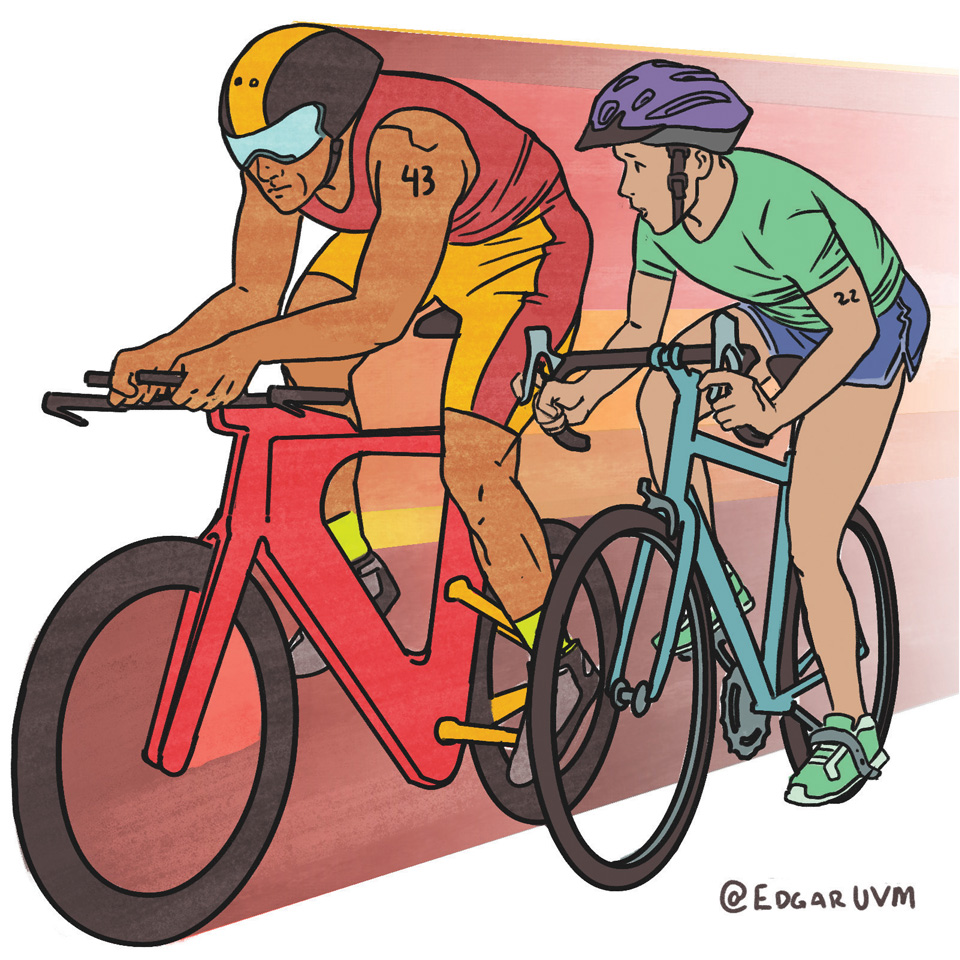It’s Not the Years, It’s the Mileage

Some of us started playing sports at a young age, in little leagues, skate parks, or on community swim teams. Most of us discover our passion for exercise sometime between our first college class and second grandchild. When it comes to age, what are the pros and cons of being active in each of these sports?
CrossFit
CrossFit is considered one of the most versatile and scalable fitness regimens available. It incorporates weightlifting, flexibility, and playground games. It may seem like a young person’s game; however many people take up CrossFit no matter their age.
Scott Garrett at CrossFit Round Rock said, “I spend more time on post recovery and mobility than I did in my twenties.” Marcus Garcia, age 46, states that a benefit to “being older is knowing that focusing on form and technique will get me further than the amount of weight on the bar.”
Sam Auburn, a young crossfitter, said, “When you're younger, you wanna go a mile a minute, and get your results quickly, and maybe cut corners.” On the other hand,younger athletes are more willing to push their limits and try new things, like handstand push-ups.
Diana Calderon Peña competes in Masters and said, “I know I need to take rest days, and sometimes it's more than one day so as to let my body recover”. Something nearly all women in CrossFit can agree on is that, no matter your age, double unders have the same effect as sneezing with a full bladder.
Keep reading!
Triathlons
When it comes to competing in triathlons you see your opponent's age on their left calf. The most discouraging aspect is when someone twice your age passes you like they are taking a Sunday stroll.
For Red Tripp, one of the downsides of being an older triathlete is that her wave for the swim start is always one of the last to go, which means biking over all the 20-somethings in her path. One of the advantages is that once you are past the 40 to 45 age group, there is more opportunity to make it to the podium and qualify for nationals.
A large hurdle for the younger generation for triathlon participation is the prohibitive cost. From bikes that cost thousands to training plans in three disciplines, it can get expensive. Add in the maintenance on your equipment and race entry fees, and you have just spent your college tuition. At the same time, younger triathletes have more time to hone and learn good techniques for each discipline.
Keep reading!
Running
Running is a lifelong sport that has attracted millions of people to compete in local events. Over 17.1 million people finished a running event in 2015 with 50 percent of runners between the ages of 25 up to 44 and over 30 percent age 45 and older.
Holly Mayson started running in her 40s and pointed out it gets harder to make huge leaps in speed as you age. “As long as I keep running into old age I will qualify for Boston, that is my strategy,” she said.
As a younger runner, I recover quickly and can do several quality workouts at high intensity each training cycle. Nevertheless, younger age groups are highly competitive with ex-collegiate athletes making it difficult to place in the top finishers. While Tarissa Moss, a runner in her mid-twenties, reflected that “running parallels life a lot. Running has taught me a number of lessons I use in my job, things like persistence, dedication, and probably the biggest thing is discipline.”
One of the best things about running is that it has the lowest barrier to entry. All it takes is a pair of shoes and the will to run.
Keep reading!
Yoga
Yoga is practiced at all walks of life as a way to create strength, flexibility, and body awareness. In a study published in the Frontiers in Human Neuroscience of May 2015, scientists found yoga protects the brain in the decline of gray matter brain volume as we age. Amelia Raun, a four year yoga instructor, added another benefit saying, “as we mature we learn much about the use of our muscles and the connection of joints, we move with more conscious engagement and intention.”
Yoga is also meant to connect us in this moment, leaving the future and past out of the present. For those of us in early years, it is far more difficult to leave the noise behind. At the same time, younger yogis can achieve beautiful peak positions with less effort because their bodies and minds are not as fearful of injury.
No matter your age, your body was meant to move. With years come wisdom and experience to hone and practice the things that will keep you healthy and strong. With youth, you have more flexibility to explore new things and push yourself harder knowing you will have an easier time recovering.
If there is takeaway for either group, no matter your age, it is this: Have the patience to grow strong and the courage to live big.









